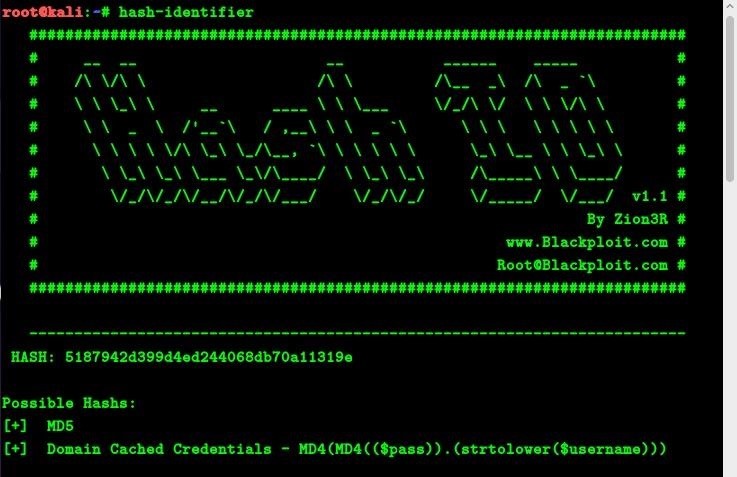
Cracking Password Hashes: Hashcat is a powerful password recovery tool that is included in Kali Linux. Hashcat supports many different hashing algorithms such as Microsoft LM hashes, MD4, MD5, SHA, MySQL, Cisco PIX, Unix Crypt formats, and many more hashing algorithms. Hashcat is the World’s fastest and most advanced password recovery utility. Supports: LM, NTLM, md2, md4, md5, md5(md5hex), md5-half, sha1, sha224, sha256, sha384, sha512, ripeMD160, whirlpool, MySQL 4.1+ (sha1(sha1bin)), QubesV3.
Hashes.com is a hash lookup service. This allows you to input an MD5, SHA-1, Vbulletin, Invision Power Board, MyBB, Bcrypt, Wordpress, SHA-256, SHA-512, MYSQL5 etc hash and search for its corresponding plaintext ('found') in our database of already-cracked hashes.
It's like having your own massive hash-cracking cluster - but with immediate results!
We have been building our hash database since August 2007.
We are not cracking your hash in realtime - we're just caching the hard work of many cracking enthusiasts over the years.
The MD5 message-digest algorithm is a widely used hash function producing a 128-bit hash value. Although MD5 was initially designed to be used as a cryptographic hash function, it has been found to suffer from extensive vulnerabilities. It can still be used as a checksum to verify data integrity, but only against unintentional corruption. It remains suitable for other non-cryptographic purposes, for example for determining the partition for a particular key in a partitioned database. The weaknesses of MD5 have been exploited in the field, most infamously by the Flame malware in 2012. The CMU Software Engineering Institute considers MD5 essentially cryptographically broken and unsuitable for further use. MD5 Decrypt.
In cryptography, SHA-1 (Secure Hash Algorithm 1) is a cryptographic hash function which takes an input and produces a 160-bit (20-byte) hash value known as a message digest – typically rendered as a hexadecimal number, 40 digits long. It was designed by the United States National Security Agency, and is a U.S. Federal Information Processing Standard. Since 2005 SHA-1 has not been considered secure against well-funded opponents, and since 2010 many organizations have recommended its replacement by SHA-2 or SHA-3. Microsoft, Google, Apple and Mozilla have all announced that their respective browsers will stop accepting SHA-1 SSL certificates by 2017. SHA1 Decrypt.
The MySQL5 hashing algorithm implements a double binary SHA-1 hashing algorithm on a users password. MySQL Decrypt.
Md4 Hash Cracker Recipes
NT (New Technology) LAN Manager (NTLM) is a suite of Microsoft security protocols that provides authentication, integrity, and confidentiality to users. NTLM is the successor to the authentication protocol in Microsoft LAN Manager (LANMAN), an older Microsoft product. The NTLM protocol suite is implemented in a Security Support Provider, which combines the LAN Manager authentication protocol, NTLMv1, NTLMv2 and NTLM2 Session protocols in a single package. Whether these protocols are used or can be used on a system is governed by Group Policy settings, for which different versions of Windows have different default settings. NTLM passwords are considered weak because they can be brute-forced very easily with modern hardware. NTLM Decrypt.

Md4 Hash Cracker Online
SHA-2 (Secure Hash Algorithm 2) is a set of cryptographic hash functions designed by the United States National Security Agency (NSA). They are built using the Merkle–Damgård structure, from a one-way compression function itself built using the Davies–Meyer structure from a (classified) specialized block cipher. SHA-2 includes significant changes from its predecessor, SHA-1. The SHA-2 family consists of six hash functions with digests (hash values) that are 224, 256, 384 or 512 bits: SHA-224, SHA-256, SHA-384, SHA-512, SHA-512/224, SHA-512/256. SHA256 Decrypt.